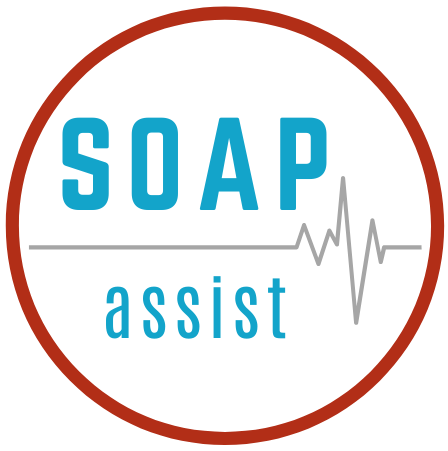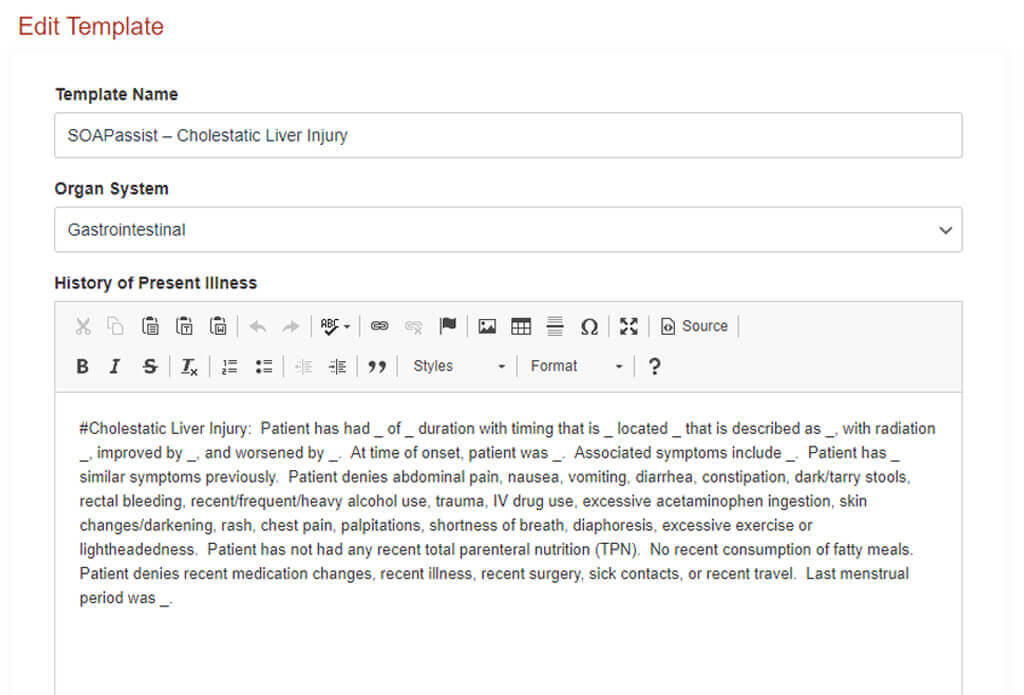Complex, serious and common, hypertension persists as a leading risk factor for serious debilitating conditions. These include heart disease, cerebrovascular disease and kidney disease, to name a few. Hypertension is classified as primary or secondary, and can be further classified based on severity. Primary hypertension has no specific underlying cause and is treated to prevent end-organ failure. As the name implies, secondary hypertension is due to an underlying cause. Treatment usually involves therapy targeting that underlying cause. Medical providers must know which type of hypertension is present and how severe it is. They should also be mindful of complicating factors such as comorbidities, response to therapy, chronicity of disease and more.
No stone left unturned
We have created a curated SOAP note template that streamlines your SOAP documentation. It also provides helpful prompts to avoid missing important testing and treatments. This template by no means captures every question, test and treatment that should be considered. However, it does provide a good starting point in creating a medical SOAP note. Let’s talk about what went into making this template.
First things first
The evaluation of a patient with elevated blood pressure should always begin with an assessment of severity. Definitions and terminology regarding severity have varied over the years. However, the assessment is always purposed after evaluating for end-organ dysfunction or the risk of developing end-organ dysfunction. The term “hypertensive emergency” has, at times, suggested a certain level of blood pressure was present. More recently, it has been favored to denote elevated blood pressure in the setting of end-organ dysfunction. This captures patients who develop end-organ dysfunction in the setting of acute elevation in blood pressure. Sometimes this occurs even though they do not meet a specific blood pressure criterion.
The term “hypertensive urgency” has been used to describe elevations in blood pressure without end-organ dysfunction. It thus denotes a risk of developing end-organ dysfunction. “Severe asymptomatic hypertension” has also been used to describe a similar phenomenon.
Missing a diagnosis of hypertensive emergency or elevation in blood pressure with end-organ damage can have catastrophic consequences. The SOAP note template used for evaluation of elevated blood pressure includes reminders to ask questions regarding signs and symptoms of hypertensive emergency. This is to reduce the risk of missing this important diagnosis.
Primary is primary
The majority of patients with hypertension have no secondary etiology. That is, primary hypertension comprises the vast majority of cases. In fact, in most cases, providers do not search for an alternate or secondary cause of hypertension. However, it is important for providers to bear in mind the circumstances in which secondary causes of hypertension should be explored. This online SOAP note template, in an organized fashion, details circumstances in which providers may consider such a workup. It is important to consider these secondary causes both at the time of initial diagnosis and during every subsequent encounter. This is because patients may meet criteria for work up of secondary hypertension later in their disease course.
Lytes out
Some amount of testing is performed at the time of diagnosis. Basic labs including complete blood counts, serum chemistries, and thyroid function studies are typical of this first assessment. These are detailed in the template. Various tests should be done at certain intervals of the disease course and with certain changes. One such example is if a patient is started on angiotensin-converting enzyme (ACE) inhibitor therapy or angiotensin receptor blocker (ARB) therapy, serum chemistries should be checked to ensure no electrolyte derangement has occurred as a consequence of the change. This template has reminders such as this so that important details are less likely to be missed.
Let’s talk
Pharmacologic treatment is very common and comprises a large proportion of the therapy provided to the patient. However, non-pharmacologic interventions remain an important part of the patient’s treatment. This template details specific items that patients should be responsible for in terms of their self-care with this disease. These include the DASH diet, weight loss, and sodium restriction. Additionally, home blood pressure monitoring is important for assessing the patient and evaluation of their response to therapy. Detailed instructions on how to check blood pressure and keep a blood pressure log are included in the template.
The wrap-up
As we’ve discussed, building well-constructed templates can streamline the SOAP documentation process. It can also provide reminders during the patient interview to ask important questions and discuss things that can change management. We recommend building and using templates that provide prompts to ask such questions. Additionally, considering a broad differential at the initial encounter can help ensure the appropriate workup and treatment are initiated promptly. As mentioned previously, this template by no means captures every question, test and treatment that should be considered. However, it does provide a good starting point. In fact, SOAPassist allows you to modify and save any SOAPassist curated template as your own. You read that correctly. SOAPassist is here to help make your documentation reflect your practice. Curated templates are the first step in that process.
Disclaimer: SOAPassist curated templates are created for use by licensed medical providers. While they are examples of what a provider might document, their intended purpose is to provide a starting point for documentation and do not constitute medical recommendations.
References:
-Filippou CD, Tsioufis CP, Thomopoulos CG, Mihas CC, Dimitriadis KS, Sotiropoulou LI, Chrysochoou CA, Nihoyannopoulos PI, Tousoulis DM. Dietary Approaches to Stop Hypertension (DASH) Diet and Blood Pressure Reduction in Adults with and without Hypertension: A Systematic Review and Meta-Analysis of Randomized Controlled Trials. Adv Nutr. 2020 Sep 1;11(5):1150-1160. doi: 10.1093/advances/nmaa041. PMID: 32330233; PMCID: PMC7490167.
-Whelton PK, Carey RM, Aronow WS, Casey DE Jr, Collins KJ, Dennison Himmelfarb C, DePalma SM, Gidding S, Jamerson KA, Jones DW, MacLaughlin EJ, Muntner P, Ovbiagele B, Smith SC Jr, Spencer CC, Stafford RS, Taler SJ, Thomas RJ, Williams KA Sr, Williamson JD, Wright JT Jr. 2017 ACC/AHA/AAPA/ABC/ACPM/AGS/APhA/ASH/ASPC/NMA/PCNA Guideline for the Prevention, Detection, Evaluation, and Management of High Blood Pressure in Adults: Executive Summary: A Report of the American College of Cardiology/American Heart Association Task Force on Clinical Practice Guidelines. Hypertension. 2018 Jun;71(6):1269-1324. doi: 10.1161/HYP.0000000000000066. Epub 2017 Nov 13. Erratum in: Hypertension. 2018 Jun;71(6):e136-e139. Erratum in: Hypertension. 2018 Sep;72(3):e33. PMID: 29133354.

